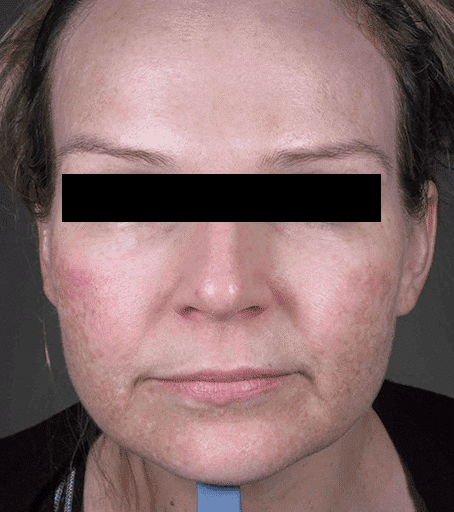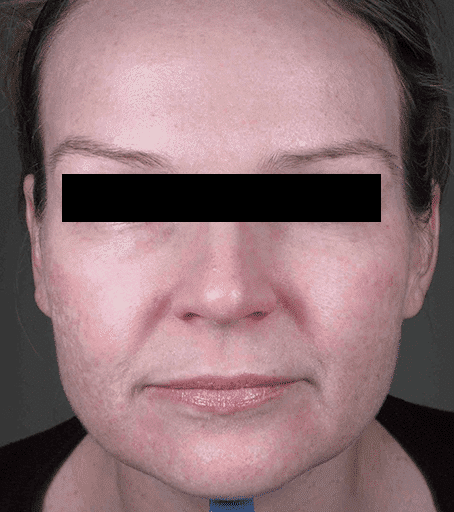
-Acne-induced inflammation can cause post-inflammatory Erythema (PIE)
-Consistent use of sunscreen can significantly decrease redness-vascular lasers offer a highly effective and efficient solution to reduce redness
-Preventing the formation of new acne spots is crucial for long-term results-in cases where both red and brown marks are present, Picosecond lasers may be beneficial.










Post-inflammatory erythema (PIE), also known as macular erythema, refers to flat, red scars that result from inflammation caused by various conditions, including acne, chickenpox, and trauma from peels and lasers.
Unlike PIH, which is a form of hyperpigmentation that predominantly affects darker skin types, PIE can occur in both light and dark-skinned individuals. The natural course of PIE involves gradual improvement over a period of 2-12 months. However, in some cases, it may take 3 years or longer for the scars to fade.

The most effective way to manage PIE is to apply sunscreen regularly, especially in the early stages, as this can significantly reduce the likelihood of developing PIE.
For established red scars, a vascular laser is often used. This type of laser targets the haemoglobin in the blood vessels, heating them up and causing the small capillaries to collapse, thereby improving PIE. In cases where both red and brown scars are present, a picosecond laser may be used instead.

The number of sessions required to treat PIE depends on the duration of the scars, your skin type, and your response to laser therapy. Typically, patients require between 2-4 sessions spaced 2-4 weeks apart. However, if you have darker skin or resistant scars, you may require four or more treatments.
For atrophic scars; CO2, RF microneedling or fractionated CO2 with laser assisted drug-delivery is the preferred treatment option. On the other hand, if you have post-inflammatory hyperpigmentation in addition to PIE, picosecond lasers are the most suitable choice.

A consultation with a specialist dermatologist is necessary.

Microneedling may provide some marginal benefits in improving the appearance of red scars or PIE. However, its main function is to facilitate the delivery of topical treatments into the skin. In the context of treating red scars, laser therapy is generally more effective than microneedling.

At Skin Specialist Centre, we offer several vascular laser options to treat PIE or red marks. Click below to learn more about the laser:
All of these devices are effective in treating PIE, and the appropriate device for you will depend on the specific characteristics of your red scars and skin type.

In addition to laser therapy, our dermatologists and nurses offer several other scar revision techniques, including:
These techniques can be tailored to your specific needs and may be used in combination with laser therapy for optimal results.

Laser treatments for PIE are typically not painful. The lasers we use come equipped with a cooling system to minimize discomfort and potential side effects. If needed, a topical anesthetic cream is offered. The treatments usually takes around 5-10 minutes to complete.

Recovery time following vascular laser treatment depends on the type of settings used. We offer two settings:
Prior to your laser appointment, your dermatologist or laser nurse will advise you on the appropriate settings based on your skin type and specific needs. In general, the more aggressive the settings, the longer the downtime, but the better the outcomes.

Topical anti-inflammatory creams prescribed by dermatologists can be effective in treating PIE. However, over-the-counter creams may not be as effective.
It is important to note that consistent use of sunscreen is crucial in managing PIE and can make a significant difference in improving the appearance of red scars.

Sunscreen is crucial in managing redness or PIE since exposure to UV rays can exacerbate the condition. To protect your skin, it is recommended to use a cosmetically elegant, stand-alone sunscreen such as La Roche Posay or Avene.
To use sunscreen effectively, apply 2-3 ml to your face and neck in the morning. For optimal protection, reapply the same amount of sunscreen at noon.

Before undergoing PIE treatments, it is important to keep in mind the following points:
By keeping these points in mind, patients can achieve the best possible outcomes and maximise the benefits of their investment in scar revision treatment.
For all appointment enquiries, medical referrals and urgent enquiries please contact us at info@scarsandlasers.co.nz or (09) 524 5011.
